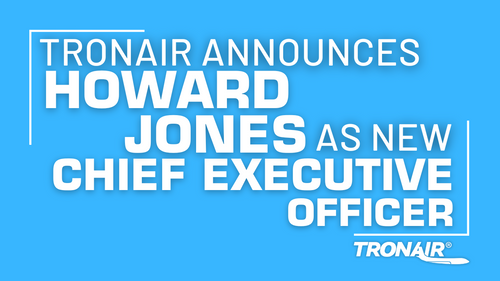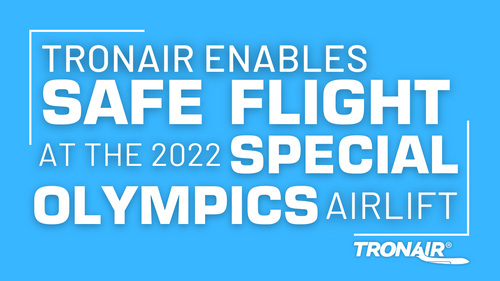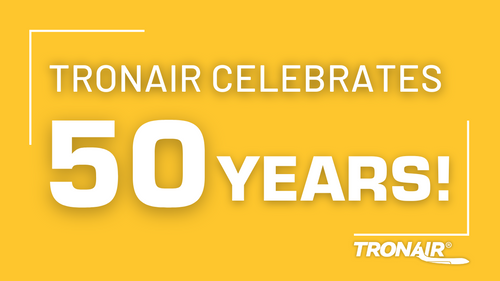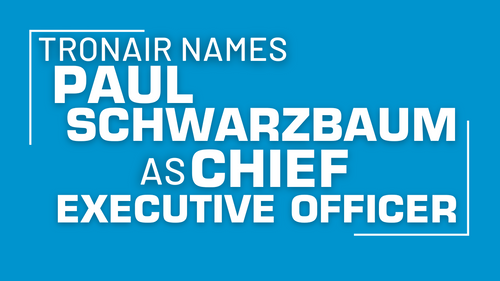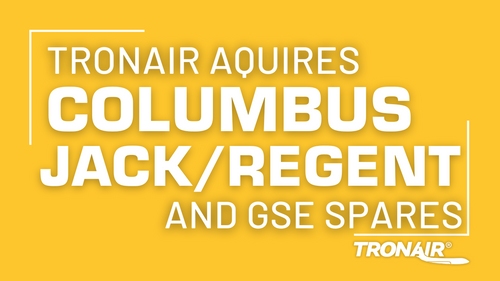
Important Safety Procedures for Using Aircraft Jacks
Resources & Technical ArticlesWhen it comes to routine maintenance and inspections, aircraft jacks are essential equipment. Proper jacking techniques aren't the most complex on the flightline, but in order to prevent accidents, injuries or costly damage to an aircraft, specific safety procedures must be in place when operating aircraft jacks of all types -- including Tronair jacks. If you value your ground crew's safety, jacks should only be used by those who are trained and fully aware of the risks involved if safety procedures are not followed.
Keep in mind, safe jacking techniques, procedures and safety precautions vary from aircraft to aircraft. The following is a general outline of standard jacking safety procedures closely related to most aircraft models and types. Before using jacks, consult your aircraft and aircraft jack manuals for specific maintenance and safety procedures.
1. Familiarize Yourself With Basic Rules of Aircraft Jack Operation
Before technicians use jacks to perform routine maintenance or aircraft repairs, they should always read over the basic rules of operation to ensure their safety and the safety of the aircraft. There are plenty of rules and precautions to keep in mind when jacking up an airplane. Here are some of the most important to remember when working with aircraft jacks:
- Never put hands between an aircraft jack and the corresponding jack pad.
- Never attempt to align an aircraft jack under an aircraft by pounding or kicking the jack legs. Dented legs can quickly lead to the jack's collapse.
- Never place hands on top of the jack near the hand wheel safety nuts when lowering an aircraft jack. Pinch points exist in all airplane jacks between the top of the jack and the threads on the ram.
- Always lower the hand wheel safety nut(s) after the aircraft jack is fully under the load. Make sure the hand wheel safety nut(s) is fully seated on the jack pad after raising it.
- Always raise and lower the aircraft jack simultaneously, so the aircraft remains level and secure at all times.
- Always use an aircraft tail stand or nose stand, when applicable, for additional stability.
- As with all aircraft maintenance procedures, always wear safety glasses when performing safe jacking techniques.
- Always use hand wheel safety nuts when using airplane jacks. The cast handle will completely surround the pinch point for extra safety.
- When raising or lowering aircraft jacks, always ensure the hand wheel safety nut is 1 inch from the top of the jack.
2. Inspect & Test Jacks Before Every Use
Before attempting to use jacks for any reason, they must be thoroughly inspected and tested. If something goes wrong during the jacking procedures and the equipment wasn't properly checked, even if it is entirely unavoidable, the technician will be held fully liable and blamed for the damage. Inspecting and testing equipment before you use jacks is a full-proof way to ensure every operation is safe. Even if technicians utilize safe jacking techniques during operation, a non-inspected jack always has the potential to fail.
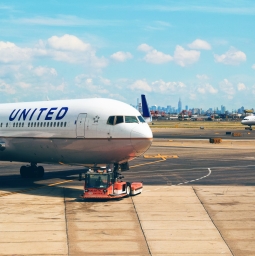
Five-Point Aircraft Jack Inspection
Jacks must be inspected for specific lifting capacity, functioning jack safety locks, pin conditions and general serviceability. A five-point inspection is highly recommended before every use and includes the following:
- 1. Check for any bent or stressed components.
- 2. Verify all fluid levels and top them off if required.
- 3. Check welded joints for signs of fatigue.
- 4. Make sure there are no missing or damaged components or parts.
- 5. Examine the condition of the locknuts.
Similar to inspection before use, jacks must be inspected after use as well. If something is damaged in operation, it's important to catch it as soon as possible to ensure they are available the next time they are needed. Technicians can perform the same five-point inspection to ensure airplane jacks are in good working condition.
3. Always Use Aircraft Jacks in a Level Position
It's imperative to remember only to use aircraft jacks on a solid, level surface. An aircraft hangar is the best environment for aircraft jack operations when possible. This ensures the aircraft is as level as possible to avoid overloading the aircraft.
4. Use Proper Jacking Points
Before attempting to use aircraft jacks, the proper location of the jack points should always be pinpointed. The manufacturer's maintenance manual will provide this location information for each aircraft type. Jacking points tend to be found in relation to the aircraft's center of gravity in order to be well balanced when on the aircraft jacks. Ensure the proper jacking pads on the aircraft are in use and that the aircraft jacks are perfectly centered under them. Having the jacking points centered ensures the aircraft load is distributed correctly, and will prevent any cocking when you raise the aircraft.
5. Make Sure Aircraft Jacks Aren't in the Way
Before jacking an aircraft, technicians should survey the areas under and around the aircraft to determine if any hazards to the aircraft or personnel are evident. For the highest level of safety, the immediate area around the aircraft should be identified with safety barriers and secured with warning notices. Always inspect the legs of the aircraft jack to make sure they will not get in the way or otherwise interfere with operations once the aircraft is jacked. During the jacking procedure, no personnel should be allowed in the aircraft.
6. Check if Aircraft Stabilizers Are Required
Safe jack stabilizers are designed to ensure the aircraft stays in place when lifting. Safe jack stabilizers also help to ensure the safety of your entire crew and the aircraft itself when you lift and shore using Tronair jacks.
Stabilizing aircraft jack stands can be equipped with an alarm to warn you when the weight on the load cell exceeds 100 lbs. (an overloading situation). This feature ensures safety when performing maintenance, lifting and shoring.
7. Store Aircraft Jacks Properly
Even in the mildest weather conditions, the ground crew should never store aircraft jacks outside. If an aircraft is scheduled for a wash while on aircraft jacks, place a cover over the entire jack to prevent water or chemical exposure.
8. Complete Annual Tests & Certifications
Annual load tests and certifications need to be conducted on Tronair jacks regularly. These should be a part of both the 90-day and 12-month maintenance schedules.
90-Day Maintenance Checklist
The 90-day maintenance and inspection should be recorded within a datasheet. The following should be included in your Tronair Tripod Jack 90-day maintenance and inspection checklist:
- 1. Operate the aircraft jack, raising and lowering it completely three times. The jack should be stored in the retracted position. Do not over-pressurize it once fully extended.
- 2. Thoroughly check the hydraulic system for leaks. This includes checking hydraulic fluid lines, hand pumps, reservoir release valves and optional air pumps.
- 3. Inspect the airplane jack structure for any potential corrosion and/or excessive wear. Check the locking pins, the mechanical extension, welded joints, hand wheel safety nut and jack pads.
- 4. Inspect the fluid level with the rams fully retracted.
- 5. Extend rams and visually inspect for corrosion, foreign matter and excessive wear.
- 6. If equipped, check the air pump, referencing the air pump service manual.
- 7. Look over the paint condition. If there are areas that are exposed, touch them up.
- 8. Lubricate the threaded ram with DoAll, RPM, LPS or an equivalent water repellant that is Buna N compatible.
- 9. Open the release valve and verify that the rams fully retract with a load of about 50 lbs. or less. Perform aircraft jack load test and certification per manufacturer's instructions.
- 10. Lubricate the casters.
12-Month Maintenance Checklist
12-month maintenance and inspection should be recorded within a datasheet. The following should be included in your Tronair Tripod Jack 12-month maintenance and inspection checklist:
- 1. Inspect the hydraulic fluid for contamination (dirt or water). Drain and flush if needed.
- 2. Perform 90-day maintenance and inspection.
- 3. Check the pressure relief valve on the hand pump.
- 4. Perform aircraft jack load test and certification per manufacturer's instructions.
By implementing these safety procedures when using aircraft jacks, you'll promote safe operation and save time and money by preventing costly damage to the aircraft and aircraft jacks. These procedures can help develop a solid foundation for any hanger's aircraft jack operation and maintenance program.
Browse Our Selection of Tronair Aircraft Jacks, Towbars & More
Here at Tronair, we offer a wide variety of aircraft jacks for sale to help in your jacking operations. With top-rated aircraft jacks and supporting accessories, you can rest easy knowing you'll be able to conduct jacking procedures with ease for years to come. Head on over to Tronair today, and take a look at our entire selection of aircraft jacks, towbars, stabilizer stands and more for your maintenance procedures. Have a question or need more information? Contact the expert team at the Tronair customer service department today. We're always happy to help.
Shop Tronair Aircraft Jacks

